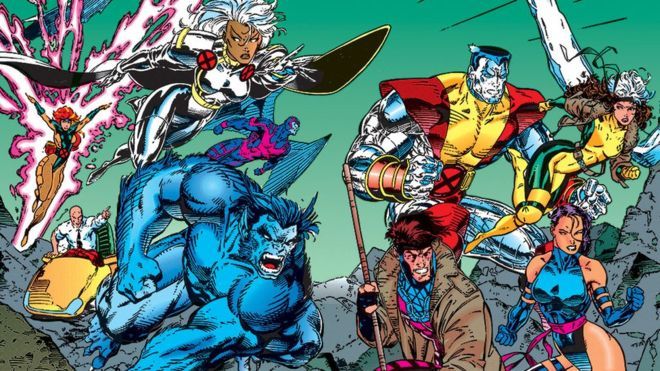
For an 80-year-old, this one's still going strong: shooting lasers out of its eyes, adventuring through space, saving the world in a metal suit.
But this pensioner is Marvel Comics, which is celebrating its anniversary this week, and much like Captain America - who fought in World War 2 - it doesn't age like the rest of us.
Marvel published its first ever comic book in 1939 and today, it's one of the biggest names in entertainment.
Recent movies like Captain Marvel and Avengers: Endgame made more than a billion dollars each at the global box office.
Which isn't bad going for a company that nearly went bankrupt in the 1990s.
'Flawed heroes'
In the early days, Marvel was known as Timely Comics and featured superheroes like Submariner, an underwater adventurer who's still in the comics today, and the Human Torch - an early version of a character who would become part of The Fantastic Four.
But it was in the 1960s when it really started to make its mark.
"By that point, superheroes had been around for a couple of decades," Chris Murray, a professor of comic studies at the University of Dundee, tells Radio 1 Newsbeat.
"Batman, Superman and Wonder Woman had been around that long and they were kind of like the old guard."
Those three characters are published by DC Comics, one of "the big two" and still Marvel's biggest rival today - although there are many other smaller publishers.
"What Marvel did in the 1960s was create a different range of heroes that were more like ordinary people, they were flawed heroes.
"Characters like Spider-Man and the Hulk were motivated by guilt or rage."
After gaining his spider powers, Peter Parker chooses not to stop a mugger who, moments later murders his uncle. When Bruce Banner becomes The Hulk it's because his anger gets too much for him to hold the furious green monster back.
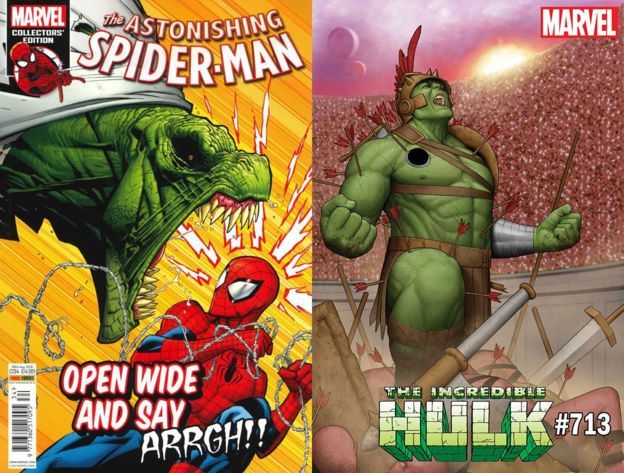 |
| Spider-Man and Hulk are two of Marvel's biggest superhero stars |
But Marvel's characters and stories tried to do more than just relate to its readers. They also reflected social change taking place in America.
"There was an emphasis on quite important issues of the time, issues of social justice, fighting prejudice," says Chris.
"Characters like X-Men and the Black Panther were challenging issues of prejudice in a divided nation."
The X-Men, hated for powers they were born with and have no control over, have been seen as a metaphor for prejudice against minority groups such as the LGBT community.
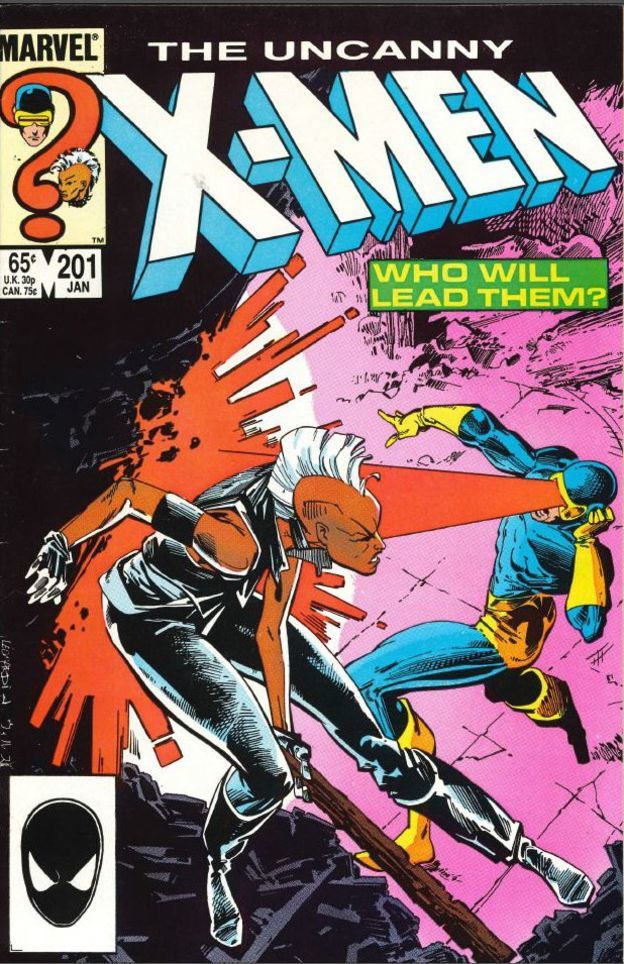 |
| The X-Men represented minorities and faced hate from people for their powers |
Black Panther, the first black superheroto appear in American mainstream comic books, was believed to have been inspired by the Civil Rights movement in America. He was introduced in a 1966 issue of The Fantastic Four.
 |
| Black Panther first appeared in 1966 alongside The Fantastic Four |
Over the decades, Marvel Comics has always strived to be relevant. One of its most famous covers (published in 1941) shows Captain America punching Adolf Hitler in the face.
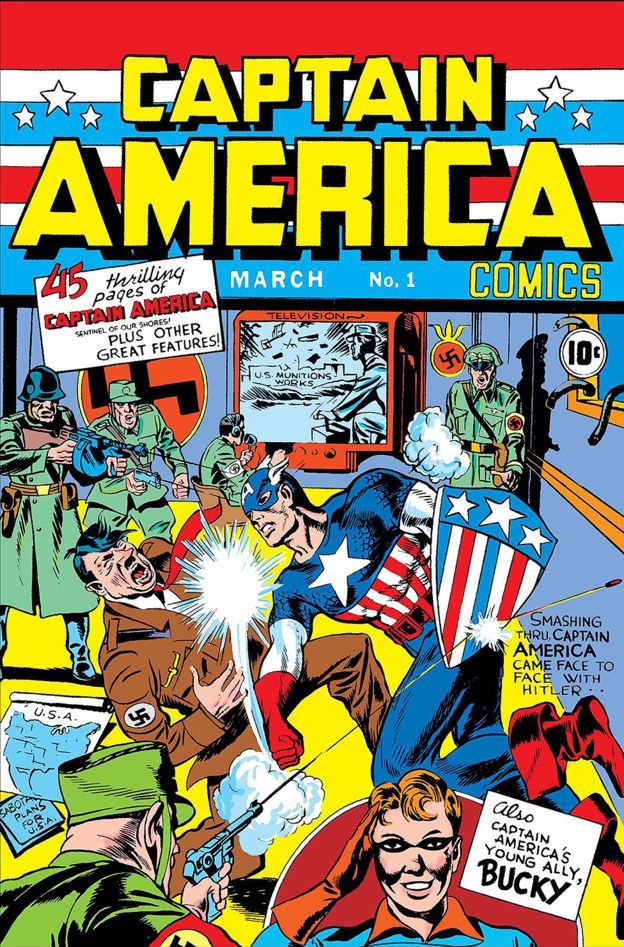 |
| The comics reflected what was happening in society but weren't historically accurate |
In recent years, it has introduced more diverse characters like the first black Spider Man, Miles Morales and Ms Marvel (Kamala Khan) the first Muslim character to have her own Marvel comic book.
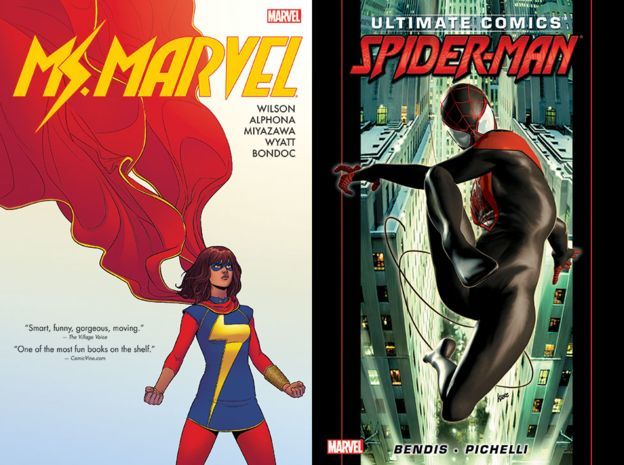 |
| Kamala Khan (left) first appeared as Ms Marvel in 2013. Miles Morales (right) made his debut as Spiderman in 2011 |
"These newer characters are bringing a breath of fresh air into the superhero genre as a whole," says Chris.
"They have started to redefine what it means to be a superhero for the 21st century, in a similar way that the heroes Marvel presented in the early 1960s felt like a breath of fresh air. It feels like they are challenging conventions and stereotypes."
There are also characters like Hulkling and Wiccan - both members of the Young Avengers - who are in a gay relationship and X-Men member Dust, who is from Afghanistan and wears a niqab.
So far, these diverse characters haven't appeared in Marvel's on-screen offerings, but there are plans to bring Kamala Khan to the small screen in her own TV series on Disney's new streaming service.
And then there's Squirrel Girl, a plus-sized computer science student who has a tail, can chew through wood and control an army of rodents.
Doreen Green made her first appearance back in 1991, and was eventually given her own series, The Unbeatable Squirrel Girl, in 2014.
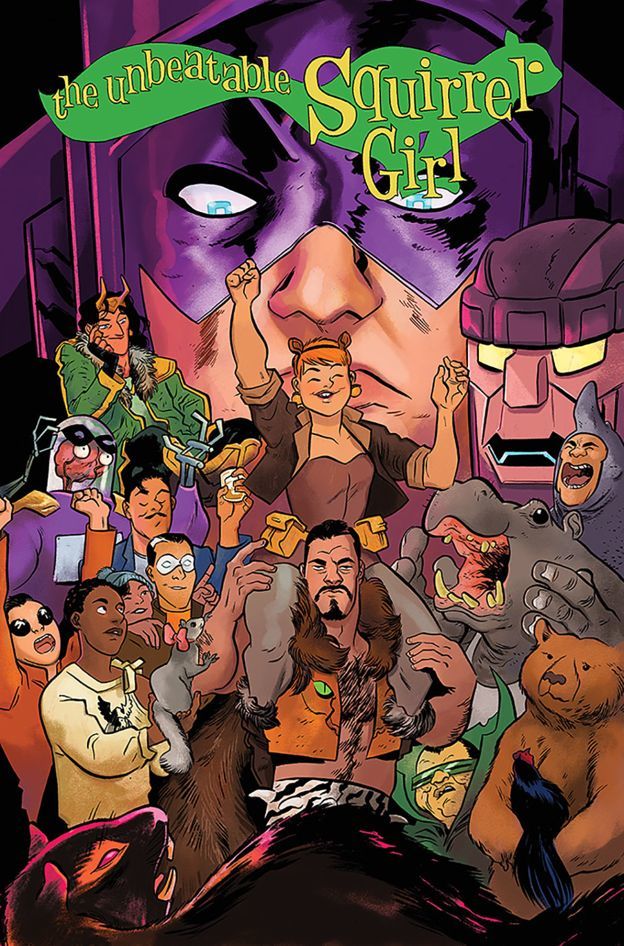 |
"In some ways, working for Marvel was better than I hoped because Squirrel Girl was a strange book that nobody had many expectations of. There weren't a lot of rules," Erica Henderson, who drew the first 37 issues of The Unbeatable Squirrel Girl, says.
"I think for a lot of people, they liked seeing a character that didn't look like a traditional superhero.
"I wasn't trying to make a character who was fighting oppression with the shape of her body, it was literally just the introduction of a character who's weird and doesn't seem like a superhero."
Chris believes Marvel's biggest triumphs have always come from characters like Squirrel Girl who are a bit different, or "outsiders".
And that's something which has had an impact on readers like Seb, who's 26 and first got into Marvel comics when he picked up a Wolverine vs. Deadpool comic when he was younger.
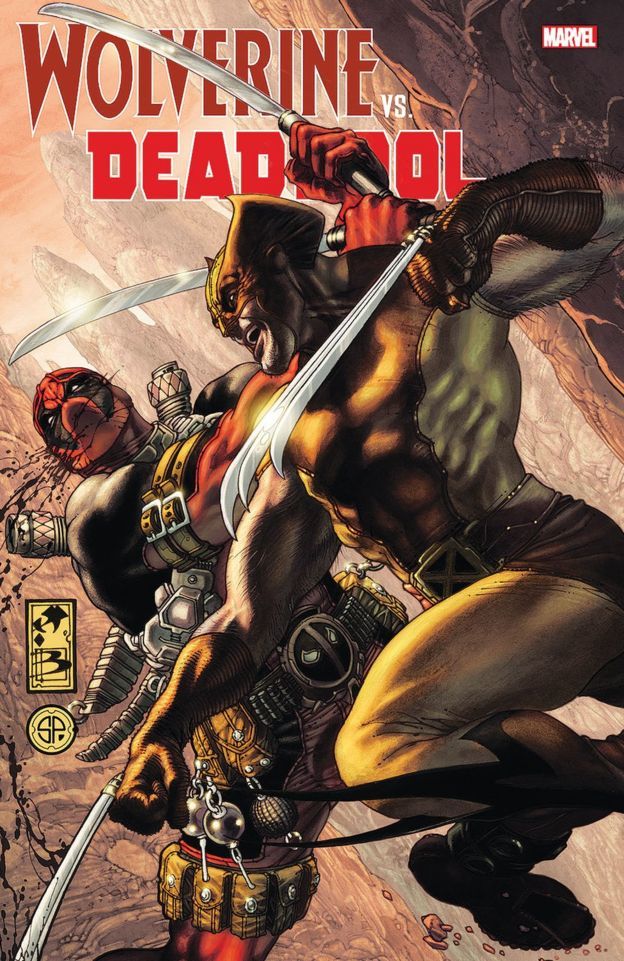 |
| Wolverine and Deadpool have been enemies and comrades during their time as X-Men |
"I was a bit of an outcast as a child," Seb says.
"I'm not very good at reading. But I enjoyed comics, because it gave me that kind of visualisation I needed in my mind. The way I see things, it's like how a comic would look."
'It was easier to escape into the Marvel universe'
It was Deadpool - who uses bad language and often talks to the reader instead of characters he's sharing a page with - who Seb connected with most.
"Everything just seemed to make sense. It was just like a world that I understood compared to the world I was living in. It was a lot easier to just escape into the Marvel universe."
'The comics were massively overvalued'
But that universe could have been lost forever when Marvel hit financial problems in the 1990s.
"The comics industry had been massively overvalued for years," says Chris.
"Comic collectors had been buying multiple copies of issues, believing that they were going to be valuable in 10-20 years time so they were investing."
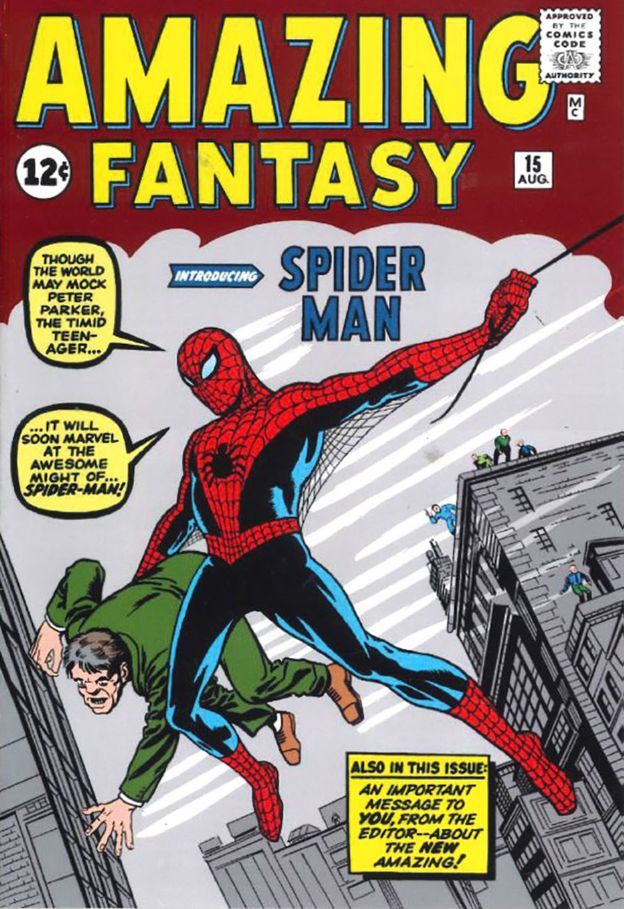 |
| To mark its 80th anniversary, Marvel is re-printing the first comic it published featuring Spider-Man |
The first appearance of Spider Man, in 1962's issue 15 of Amazing Fantasy, once sold for $1.1m (£895,000) and the first appearance of characters like X-Men, Iron-Man and The Incredible Hulk have sold for hundreds of thousands of dollars.
But that wasn't the case for comics being printed in the 1990s, because Marvel - and other companies - were printing millions of copies of titles.
The 1991 X-Men relaunch was published with five different covers - none of which would ever be rare.
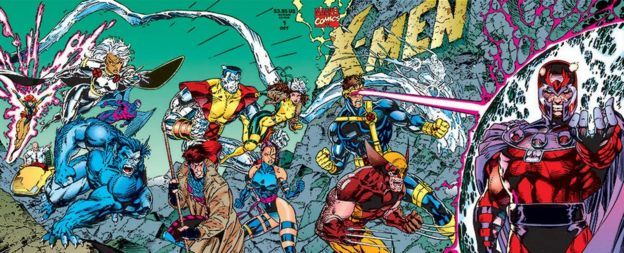 |
| X-Men issue 1, released in 1991, is the biggest selling comic of all time |
Chris adds that Marvel had also taken risks by moving into the toy and merchandising business - which didn't pay off at the time.
That's what led Marvel to sell the movie rights for Spider Man to Sony in 1999 for just $7m.
And that deal is something Marvel has struggled to resolve.
Whoever ends up owning the rights to Spider Man, Marvel's future seems to lie more on screens (Black Panther was nominated for Best Picture at the 2019 Oscars) than it does the printed page. DC - and other rival publishers - have also seen their comic characters hit screens in recent years.
It recently announced 10 new movies earlier this year and eight new TV series in production for new streaming service Disney+.
'Eighty years of storytelling'
But that doesn't mean there won't be another 80 years of traditional comic books, in print and digital.
Chris says when Marvel first began their cinematic offering, it was clear the people making the films had done a "real study" of what made the Marvel comic universe work.
"The minute that Nick Fury turns up at the end of the first Iron Man film and asks Tony Stark if he's heard of the Avengers initiative, comic readers know where that's going," he says.
"I think the success of the Marvel films over recent decades is very closely linked to Marvel's 80 years of history, its vast experience in storytelling, and the development of their characters," says Chris.
Erica agrees: "It all boils down to those original stories," she says.
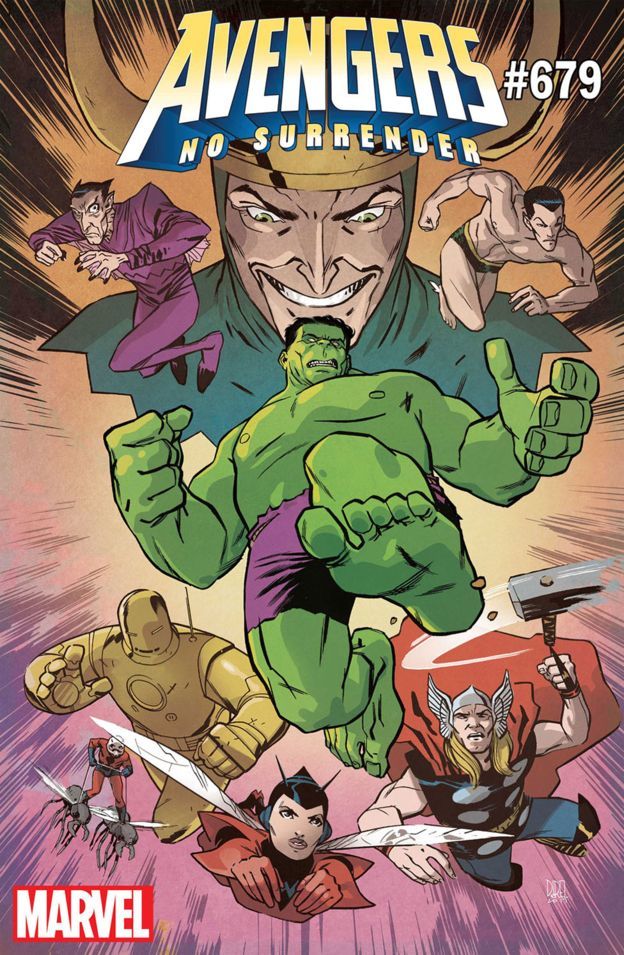 |
| The Avengers, Marvel's biggest cinematic success, are still off on new adventures in the ongoing comic books |
Chris admits comic book sales "aren't what they were" but says he believe there's little chance of them disappearing from shelves.
"The comic book remains culturally significant and relevant. It's a way that people like to consume stories," Chris says.
"I think there will always be comics, and I'm sure as long as there are comics Marvel will have a stake in that world." BBC
 Marvel is celebrating 80 years of making comics and its rise to one of Hollywood's biggest names.
Marvel is celebrating 80 years of making comics and its rise to one of Hollywood's biggest names.